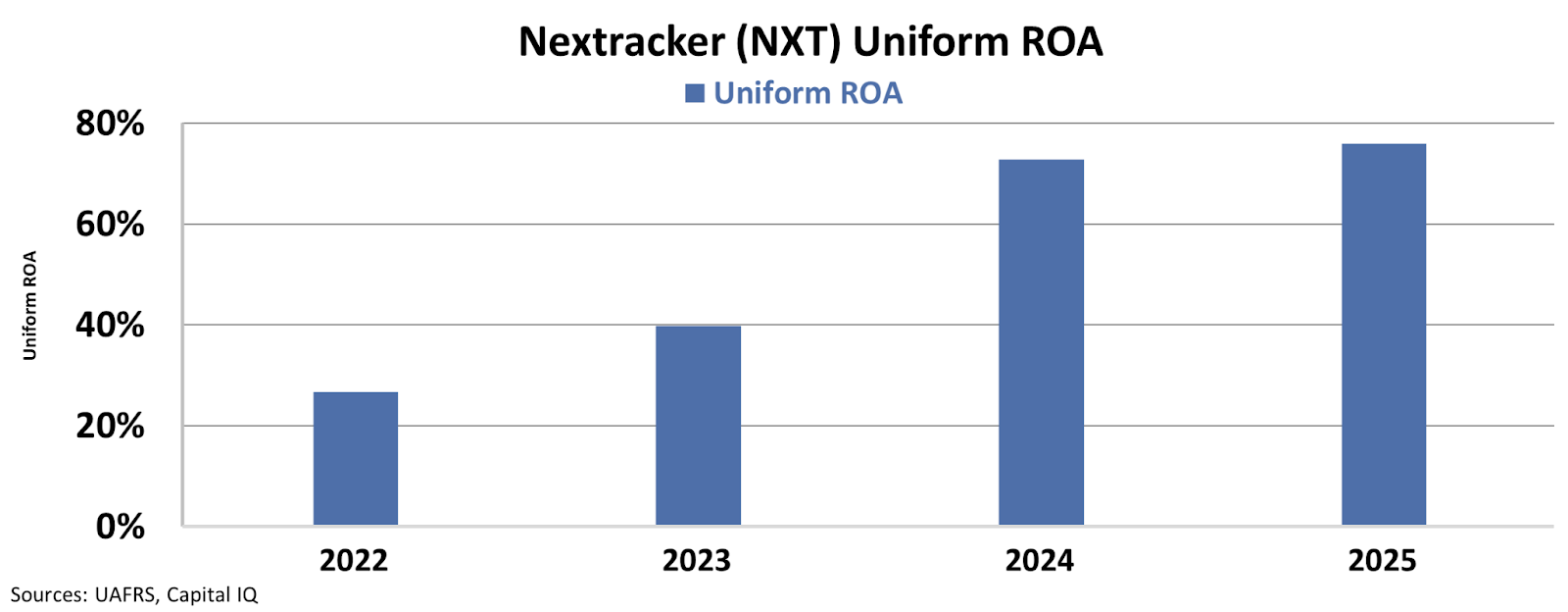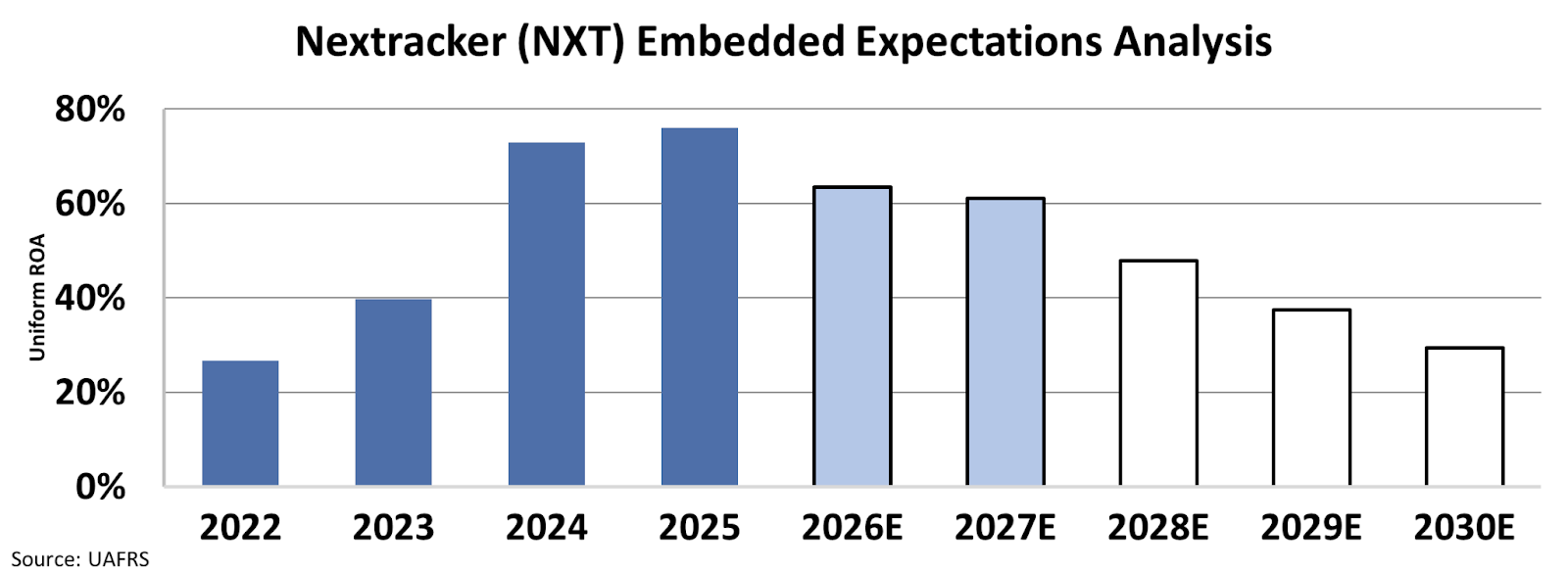This solar technology solutions provider is well-positioned to capitalize on solar energy’s growth

Energy demand in the U.S. is expected to rise by as much as 25% by 2030, making access to reliable power sources critical, especially in the age of AI.
As a result of this skyrocketing demand, reliance on renewable energy sources have massively soared. In 2024 alone, solar and energy storage accounted for 84% of new electric generation to the U.S. power grid.
Despite its significant addition to the U.S.’ energy mix, solar power generation experiences volatility due to project delays, pricing pressures, and recently, policy changes that have scaled back Biden-era government incentives.
Yet, in the face of these industry-wide headwinds, solar will continue to grow in the years to come, with global solar installations expected to grow to 914 gigawatts by 2030, 57% above 2024 levels.
With its market-leading technology, hardware, and solutions, Nextracker (NXT) is primed to sustain its ability to generate returns despite trading at just 12x Uniform P/E.
Investor Essentials Daily:
Tuesday News-based Update
Powered by Valens Research
Rising global energy demand is driving greater reliance on renewable energy sources such as solar to satisfy this growing need for power.
In the U.S. alone, energy demand is expected to surge 25% by 2030, making access to reliable power sources critical.
Despite this, solar power generation has experienced volatility due to project delays, pricing pressures, and recently, policy shifts.
The recently passed “Big Beautiful Bill” altered many Biden-era tax incentives and subsidies for climate- and energy-related investments which have seen increased capital allocation since the passage of the Inflation Reduction Act (“IRA”) in 2022.
Under the “Big Beautiful Bill,” IRA tax credits for unfinished wind and solar facilities will be removed by 2027. However, solar and battery components will continue to receive credits for advanced manufacturing components.
This policy shift has resulted in investor concern about the profitability and stability of the renewable energy sector—an industry that has become heavily reliant on government incentives to fund and scale projects.
In spite of this policy shift, solar power generation is still on track to keep growing for years to come. According to Goldman Sachs forecasts, global solar installations are expected to grow to 914 gigawatts (“GW”) by 2030, 57% above 2024 levels.
As renewable energy and solar power in particular, experiences growing demand, the technologies essential to its development and deployment will become increasingly valuable.
As a leading provider of solar tracking systems, Nextracker (NXT) is well-positioned to capitalize on this growth in demand.
Founded in 2007, the company is a solar technology platform provider. It pioneered the design and development of single-axis solar trackers.
Solar trackers are devices responsible for positioning photovoltaic (“PV”) panels so that they remain perpendicular to the sun.
Single-axis solar trackers increase efficiency by as much as 30% since it enables PV panels to track the sun’s movements across the sky, ensuring more sunlight reaches the solar panel, increasing the energy that can be converted into power.
Aside from these energy gains, Nextracker’s scalable and modular designs help in lowering overall project costs, as its weather-resilient trackers can be quickly installed across a variety of large sites, streamlining construction timelines. Once operational, these trackers require minimal maintenance and can be monitored remotely.
The company’s proprietary software and control systems enable it to remotely monitor performance and address any issues that may impact production.
Nextracker’s proprietary solutions and tracker design have made it the clear market and technological leader in the solar technology platform space. As of 2025, it has shipped more than 130 GW of solar trackers worldwide.
And for the tenth straight year, the company has remained the top supplier of solar trackers, capturing 26% of global market share. It also operates in more than 40 countries worldwide.
Nextracker’s solar project portfolio includes the construction and installation of utility-scale solar projects, solar plants, and solar parks in states such as Utah, Maine, California, Alabama, Nevada, and countries like Mexico, Brazil, Saudi Arabia, and Australia.
The company has delivered a stellar 76% Uniform return on assets (“ROA”) together with a Uniform asset growth of 13%, highlighting its technological and market leadership.
Beyond hardware and software, Nextracker is expanding its business through the launch of a new AI and robotics business division, made possible by its acquisitions of OnSight Technology, SenseHawk, and Amir Robotics.
These moves give Nextracker access to AI-based 3D mapping of solar sites, robotic inspection, and robotic cleaning solutions, improving the capabilities and durability of solar arrays.
This expansion is intended to strengthen the company’s end-to-end digital platform and bolster solar power plant deployment, quality, reliability, and long-term return on investment for asset owners.
Yet despite its market leadership, expansion initiatives, and strong results, Nextracker trades below corporate-average valuations, at just a 12x Uniform P/E.
This low valuation suggests that the market doubts Nextracker’s ability to sustain its market leadership and stellar returns due to concerns about industry-wide volatility brought on by recent policy shifts.
We can see what the market thinks through our Embedded Expectations Analysis (“EEA”) framework.
The EEA starts by looking at a company’s current stock price. From there, we can calculate what the market expects from the company’s future cash flows. We then compare that with our own cash-flow projections.
In short, it tells us how well a company has to perform in the future to be worth what the market is paying for it today.
At the current stock price, the market expects NXT’s Uniform ROA to decline to around 29% by 2030, a steep decline from the 76% returns it delivered in fiscal 2025.
Wall Street analysts understand the crucial role solar power has to play in skyrocketing energy demands. They believe Nextracker will be able to sustain 60% returns in each of the next two years.
With access to reliable and proven utility-scale power solutions becoming critical, renewable energy sources such as solar have a crucial part to play in meeting global energy demand, even as it continues to face volatility due to policy shifts and industry-wide headwinds.
Given the company’s technological leadership and global presence, Nextracker is well-positioned to benefit from the growing demand for solar energy and maintain its leading market position for years to come.
Best regards,
Joel Litman & Rob Spivey
Chief Investment Officer &
Director of Research
at Valens Research






